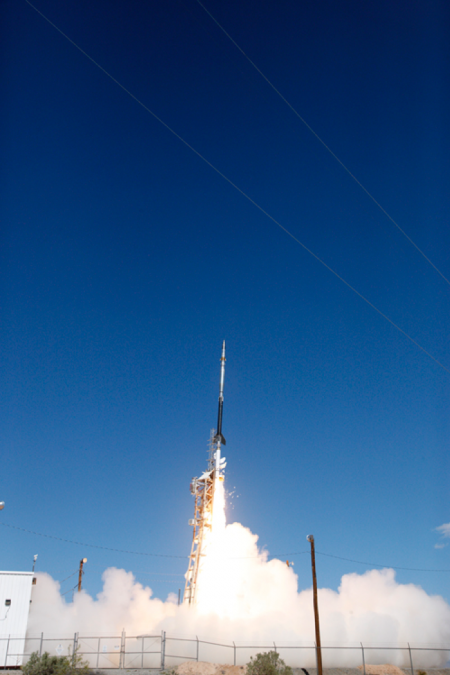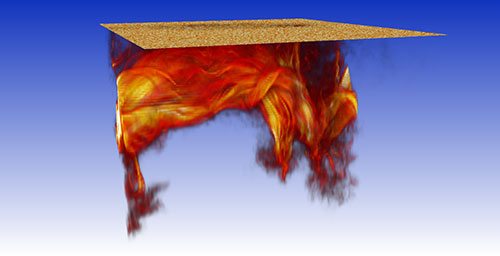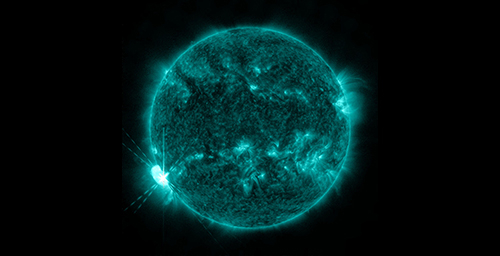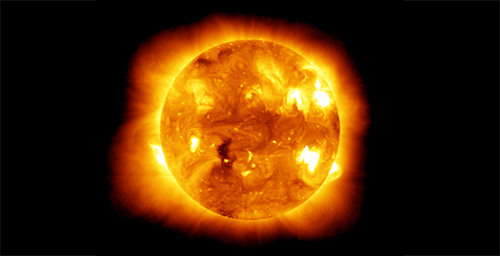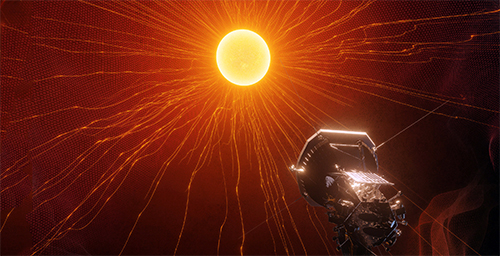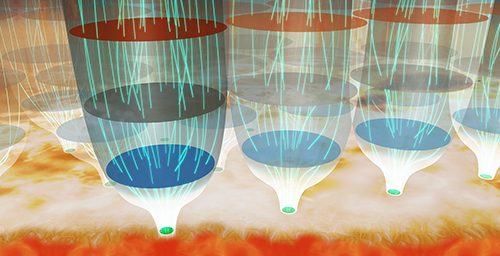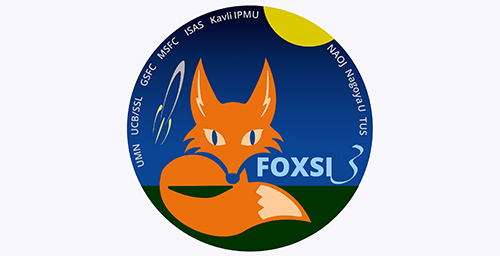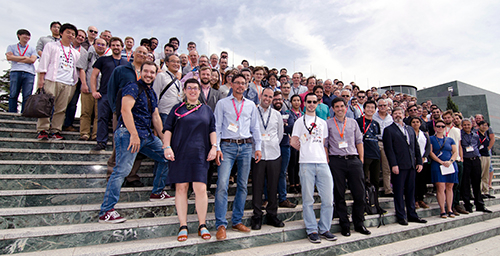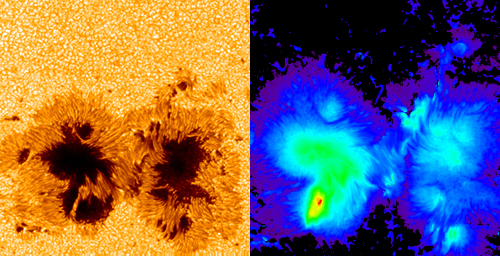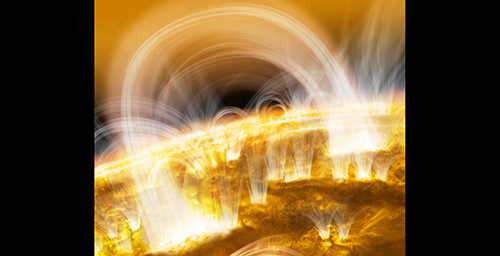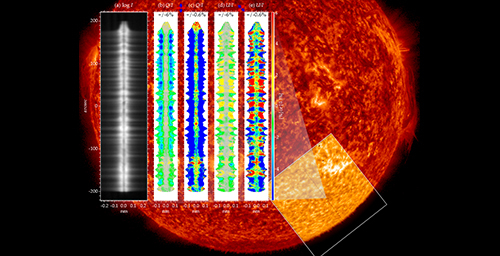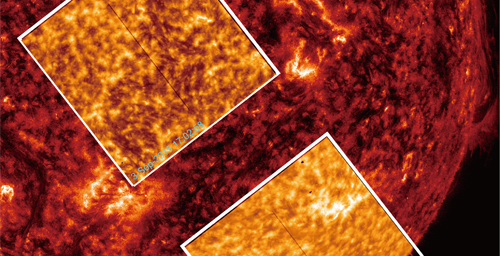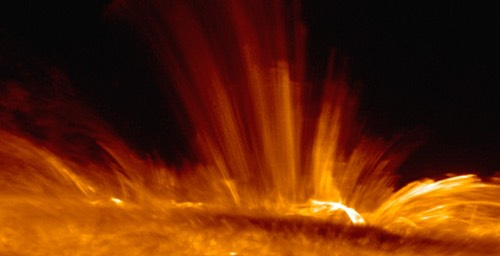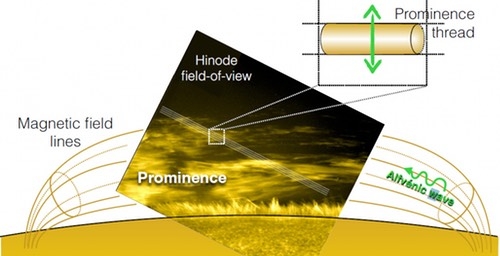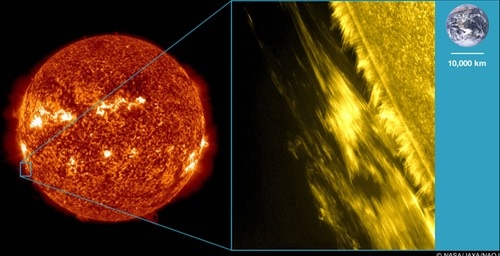National Astronomical Observatory of Japan, National Institutes of Natural Science
Institute of Space and Astronautical Science / Japan Aerospace Exploration Agency
The CLASP2 sounding rocket experiment launched on April 11, 2019 at 10:51 a.m. MDT (01:51 a.m. JST on April 12) from the White Sands Missile Range, New Mexico, USA. It reached 274 km at maximum altitude and observed the Sun for 6 minutes from above 160 km. After the observations, the instrument parachuted down to the White Sands Desert, and was carried back to the laboratory. All the data stored in the instrument were recovered successfully.
Photo : CLASP2 Sounding Rocket launch. (credit: US Army Photo, White Sands Missile Range)
CLASP2 (Chromospheric LAyer Spectro-Polarimeter 2) is the second rocket experiment in the series. The first, CLASP (or CLASP1 here) launched in September 2015, observed ultraviolet light emitted by neutral hydrogen atoms and detected the scattering polarization and their modulation by magnetic fields in the solar atmosphere. However, the CLASP1 hydrogen observations couldn't accurately measure the physical quantities of magnetic fields in the chromosphere. Hence, the CLASP2 mission started. CLASP2 observed ultraviolet light emitted by ionized magnesium atoms and detected the scattering polarization and modulation to measure the vector magnetic fields in the chromosphere.
Like CLASP1, the CLASP2 mission was carried out through international collaboration. Japan took the lead in instrument development and testing; the diffracting grating was supplied by France; and the CCD cameras by the US. The main structure and optical elements were reused from CLASP1, reducing development time and cost.
Please visit Hinode Science Center website for more details.

